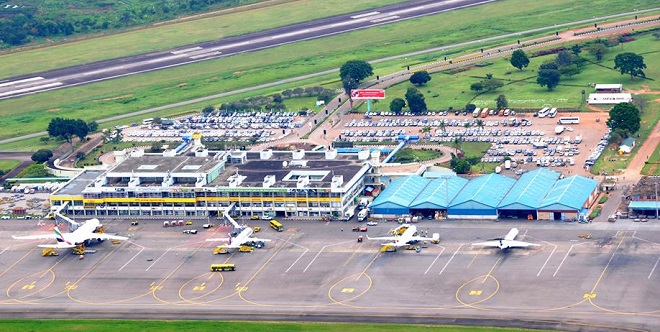
The government-owned Kenya Airways, in which Air France-KLM has a 26.7% stake, has reported losses for the past four years, including $252 million for the financial period ending March 2016 citing rising competition, terrorism worries and fuel hedging.
Now, the carrier has embarked on a new strategy including shrinking its fleet and liquidating some of its assets in a last ditch effort to turn the company around.
Similarly, South African Airways, which is dependent on government loans and guarantees, incurred a loss for the fifth consecutive year. There are fears that it would turn insolvent without more government-backed securities.
The airline’s loss for the year ending March this year was estimated at $124 million though lower than its $329.85 million loss a year earlier.
Like Uganda, some African countries including Ghana, the Democratic Republic of Congo, Zambia, Nigeria and Mauritania had their national airlines pulled out of the skies after decades of loss-making and dependence on government subsidies.
Elsewhere in the world, Etihad, Emirates, Singapore, and Qatar Airways still thrive on subsidies from their wealthy governments while few others are barely afloat as commercial entities without government support.
Some analysts say the hundreds of millions dollars required to revive the national carrier could be better spent in setting up much-needed supportive infrastructure on the ground.
Indeed, the government through Civil Aviation Authority (CAA) is implementing an ambitious 20-year National Civil Aviation Master Plan projected to cost $200 million – not much given what has to be done. The plan involves a major upgrade and expansion of Entebbe International Airport that is already underway.
The development is in anticipation of an increase in passenger numbers to 7.6 million by 2033, doubling aviation revenues from the current $1.4 billion to $3 billion annually.
Since 1991, the international passenger traffic in the country has grown more than ten-fold to 1.5 million in 2015. Similarly, the volume of cargo at the airport has also increased from 6,589 tonnes in 1991 to 55,701 tonnes in 2014 – driven by rising exports volumes.
Under the master plan, the government plans to build four new international airports – three of them regional – and six local airports. Arua, Pakuba, Hoima and Kasese have been proposed to be expanded into international airports while Soroti, Kotido and Gulu are to be transformed into regional airports.
So far, feasibility studies for Kasese, Hoima, and Gulu are complete together with their engineering designs, while a similar exercise is ongoing at Arua prior to government financing. Others such as Jinja, Tororo, Moroto, Lira, Mbarara and Kisoro are to be turned into local airports. The money to finance these projects is not yet guaranteed.
Profit or pride?
So, is the national carrier a priority? Kisamba Mugerwa, the executive chairman of the National Planning Authority (NPA) – the architects of the national carrier revival, told The Independent that it is not necessarily for profit but to create linkages with tourism, exports, and easy movement of people in and out of the country.
He said NPA is also advocating the re-instatement of Uganda Airlines to make Uganda an airline hub for ‘sustainable development.’
But economists including Wasswa Balunywa, the former chairman of Uganda Airlines and former vice chancellor at Makerere University Business School, says whereas passenger traffic in the country has increased, the conditions do not favour a national airline yet.
“First, Uganda’s economy is still small and it does not have the capacity to hold an airline,” Balunywa wrote on his personal blog recently. “You could argue that Rwanda, a much smaller economy, has an airline. Yes it does but looking at its financial performance, I know it is struggling.”
He says the airline business requires numbers and yet the volume of passengers and cargo at Entebbe International Airport is still so small and is not about to grow substantially to warrant a national airline at the moment.
Edward Bbaale, the dean at the School of Economics at Makerere University, says although any growing economy such as Uganda would wish to have a national airline, it is worthwhile to take note of not only the financial analysis, net present value, good payback period of the proposed airline, but also its opportunity cost compared with investing in other infrastructure projects.
“[We need to look at whether] this the best project to undertake compared with others at this time, and this applies to other infrastructure projects that the government is investing in,” Bbaale said.
Looking forward, Balunywa says if the country is smart enough, we could start with a cargo service and then slowly graduate to passenger services when oil starts flowing, tourism is fixed, and the airline managers attain international reputation.
Jim Mugunga, the spokesperson for the Ministry of Finance, Planning and Economic Development, also shares a similar view. He says the only way for Uganda to spur growth in the tourism industry is to attract more airlines within and flying into the country by allowing concessions, upgrading national and local airports, ensuring safety, and enhancing airport ground handling capacities.
“[Reviving] Uganda Airlines at any cost, in the old form and business model in order to fly the national flag, our largely national pride and sovereignty is simply bizarre,” Mugunga wrote in an opinion in The New Vision recently.
He added that the national carrier might fly again but only if it is well-planned right from the start.
 The Independent Uganda: You get the Truth we Pay the Price
The Independent Uganda: You get the Truth we Pay the Price


